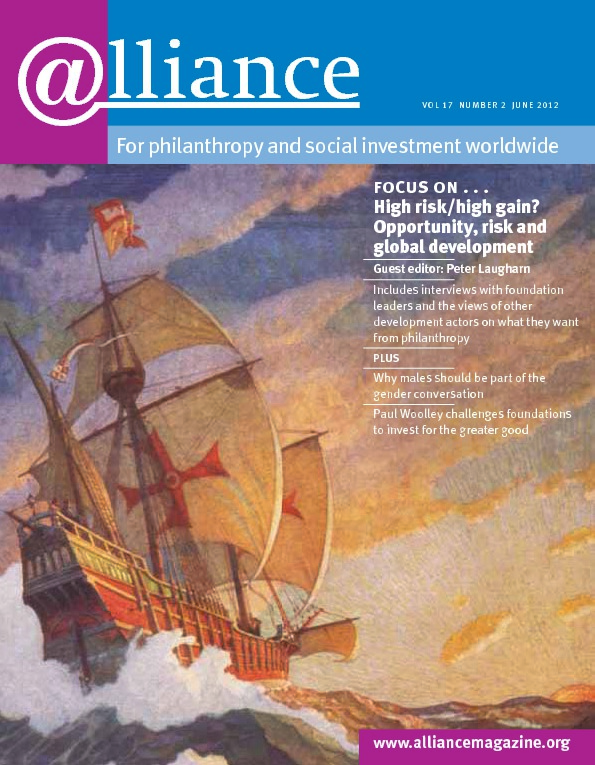Failure is failing to talk about it! Lisa Jordan makes an important point about the links between risk-taking and potential failure. It is difficult to assess how often philanthropy fails. And if it does, who learns from it? It is unusual for public benefit organizations to acknowledge publicly that they have failed, let alone share the learning. Among the few who do is Engineers Without Borders, which collects and publishes failures – including their own – on their website http://www.admittingfailure.com. EWB actually employs a Head of Failure. I linked to EWB and similar sites on my GrantCraft blog on failure earlier this year.[1]
Why is being candid about failure so unusual? Grant Oliphant, CEO of the Pittsburgh Foundation, suggests that failure is commonly associated with rejection; so, in the field of philanthropy – which is very much about feeling good – acknowledging failure is particularly awkward. Like Jordan, Oliphant stresses that philanthropists should embrace failure, seed small bets, do ‘whacko’ little things, fail, talk about it, and learn. You will find practical advice on how to go public about your failures on Bruce Trachtenberg’s blog, where I found a video presentation by Oliphant.[2]
Open, searchable sites like EWB’s can be very helpful: they make the case that there is nothing wrong with candour about failure. But going public is not always an option, if only because it may hurt others, such as partners and grantees. GrantCraft draws on practical experiences, whether successes, failures or something in between. Our contributors are usually frank; we think that is in part because there is no obligation to go completely public. So if public sharing is not feasible, use other ways to share what you learn from failure. To help tackle today’s complex problems, risk-taking is inevitable; let’s make sharing failure part of that process.
1 blog.grantcraft.org/2012/02/is-it-safe-to-fail
2 http://www.comnetwork.org/when-we-fail-to-talk-about-failure
Rosien Herweijer
Director, GrantCraft






Comments (0)